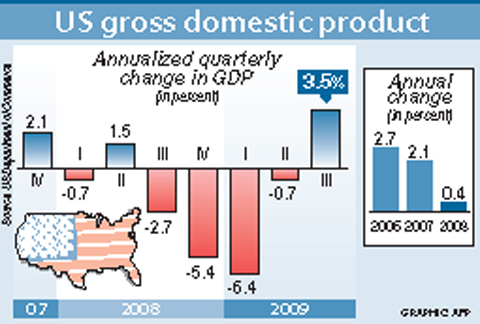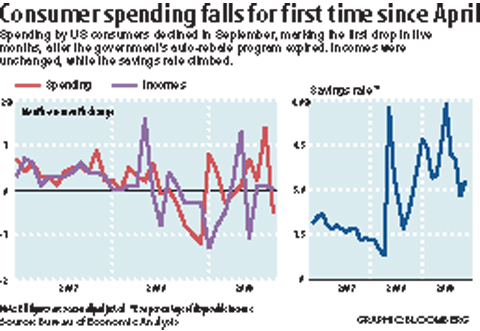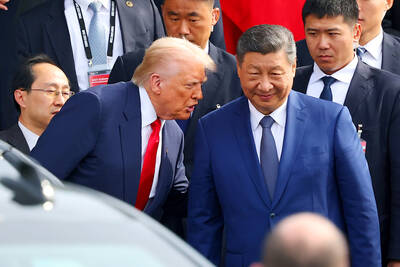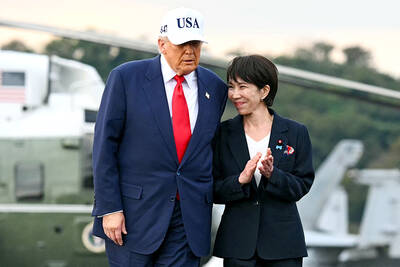Despite the return of US economic growth, Wall Street was in no mood to celebrate as it braced for a Federal Reserve interest rate decision and crucial monthly labor data in the week ahead.
“Volatility is clearly on the increase as markets attempt to digest what appear to be contradictory signals on the economy,” Brian Bethune and Nigel Gault, economists at IHS Global Insight, said in a client note.
After a slight dip the previous week, the blue-chip Dow Jones Industrial Average slid 2.6 percent over the week to finish Friday at 9,712.73.

The tech-heavy NASDAQ composite index plunged a sharp 5.1 percent to 2,045.11 over the week, while the broad-market Standard & Poor’s index gave back 4 percent at 1,036.19.
The major indices on Friday remained stuck in negative territory from the opening bell, a day after the steep rally had snapped four consecutive sessions of losses.
The downtrend followed the market’s 14-month high in the middle of last month, when the blue-chip Dow topped the psychological barrier of 10,000 points.

Though the Dow ended last month with its eighth consecutive monthly gain, the other two indices posted their first monthly drop since February.
“We are getting increasingly the sentiment expressed by investors that there are a lot of gains that have been generated this year after a dreadful 2008,” said Craig Peckham, an analyst with Jefferies, a US securities and investment banking group.
“That led to a fair amount of performance protection. We have not seen a great deal of willingness after this big rally to commit more capital to stocks,” he said.
Many analysts have pointed out that the market appeared overextended after the Dow rose more than 50 percent since its early March lows.
Spirits were only temporarily lifted after the US government reported on Thursday that GDP rose a stronger-than-expected 3.5 percent at an annual rate in the third quarter, after a year of contractions.
The news sparked the strongest single-session Dow rally since July, with blue-chips up 2.05 percent, but the euphoria quickly faded amid worries about the sustainability of GDP growth once emergency government support is withdrawn, despite a series of better-than-expected company earnings reports.
The Federal Reserve’s policymaking committee, the Federal Open Market Committee (FOMC), meets on Tuesday and Wednesday. The FOMC is widely expected to keep the Fed’s base interest rate target at an historic low of zero to 0.25 percent to help stimulate growth.
All eyes will be fixed on the FOMC rate decision to be announced on Wednesday and the accompanying statement, which will be pored over for signals on the direction of monetary policy as the economy emerges from recession that began in December 2007. Markets will also be focused on similar meetings of the European Central Bank and the Bank of England.
Bonds benefited from stock market weakness. The yield on the 10-year Treasury bond fell to 3.392 percent from 3.475 percent a week earlier and that on the 30-year bond dropped to 4.236 percent from 4.289 percent.
Bond yields and prices move in opposite directions.
Wall Street ended the week gripped by speculation that embattled CIT Group, a major lender to small and medium-sized businesses, would likely file for bankruptcy protection over the weekend.
Next week’s hefty macroeconomic calendar concludes with the closely watched monthly labor market report for last month.
The US unemployment rate rose to a 26-year high of 9.8 percent in September.
“There is a great deal of concern at this late stage of the year with where we are with jobs because the next two months are all about the consumer,” Marc Pado at Cantor Fitzgerald said. “Will they have the confidence to shop for the holidays?”
The calendar includes data on construction spending and the ISM manufacturing index tomorrow and industrial orders and the ISM services index on Tuesday.

CALL FOR SUPPORT: President William Lai called on lawmakers across party lines to ensure the livelihood of Taiwanese and that national security is protected President William Lai (賴清德) yesterday called for bipartisan support for Taiwan’s investment in self-defense capabilities at the christening and launch of two coast guard vessels at CSBC Corp, Taiwan’s (台灣國際造船) shipyard in Kaohsiung. The Taipei (台北) is the fourth and final ship of the Chiayi-class offshore patrol vessels, and the Siraya (西拉雅) is the Coast Guard Administration’s (CGA) first-ever ocean patrol vessel, the government said. The Taipei is the fourth and final ship of the Chiayi-class offshore patrol vessels with a displacement of about 4,000 tonnes, Lai said. This ship class was ordered as a result of former president Tsai Ing-wen’s (蔡英文) 2018

UKRAINE, NVIDIA: The US leader said the subject of Russia’s war had come up ‘very strongly,’ while Jenson Huang was hoping that the conversation was good Chinese President Xi Jinping (習近平) and US President Donald Trump had differing takes following their meeting in Busan, South Korea, yesterday. Xi said that the two sides should complete follow-up work as soon as possible to deliver tangible results that would provide “peace of mind” to China, the US and the rest of the world, while Trump hailed the “great success” of the talks. The two discussed trade, including a deal to reduce tariffs slapped on China for its role in the fentanyl trade, as well as cooperation in ending the war in Ukraine, among other issues, but they did not mention

Japanese Prime Minister Sanae Takaichi yesterday lavished US President Donald Trump with praise and vows of a “golden age” of ties on his visit to Tokyo, before inking a deal with Washington aimed at securing critical minerals. Takaichi — Japan’s first female prime minister — pulled out all the stops for Trump in her opening test on the international stage and even announced that she would nominate him for a Nobel Peace Prize, the White House said. Trump has become increasingly focused on the Nobel since his return to power in January and claims to have ended several conflicts around the world,

GLOBAL PROJECT: Underseas cables ‘are the nervous system of democratic connectivity,’ which is under stress, Member of the European Parliament Rihards Kols said The government yesterday launched an initiative to promote global cooperation on improved security of undersea cables, following reported disruptions of such cables near Taiwan and around the world. The Management Initiative on International Undersea Cables aims to “bring together stakeholders, align standards, promote best practices and turn shared concerns into beneficial cooperation,” Minister of Foreign Affairs Lin Chia-lung (林佳龍) said at a seminar in Taipei. The project would be known as “RISK,” an acronym for risk mitigation, information sharing, systemic reform and knowledge building, he said at the seminar, titled “Taiwan-Europe Subsea Cable Security Cooperation Forum.” Taiwan sits at a vital junction on